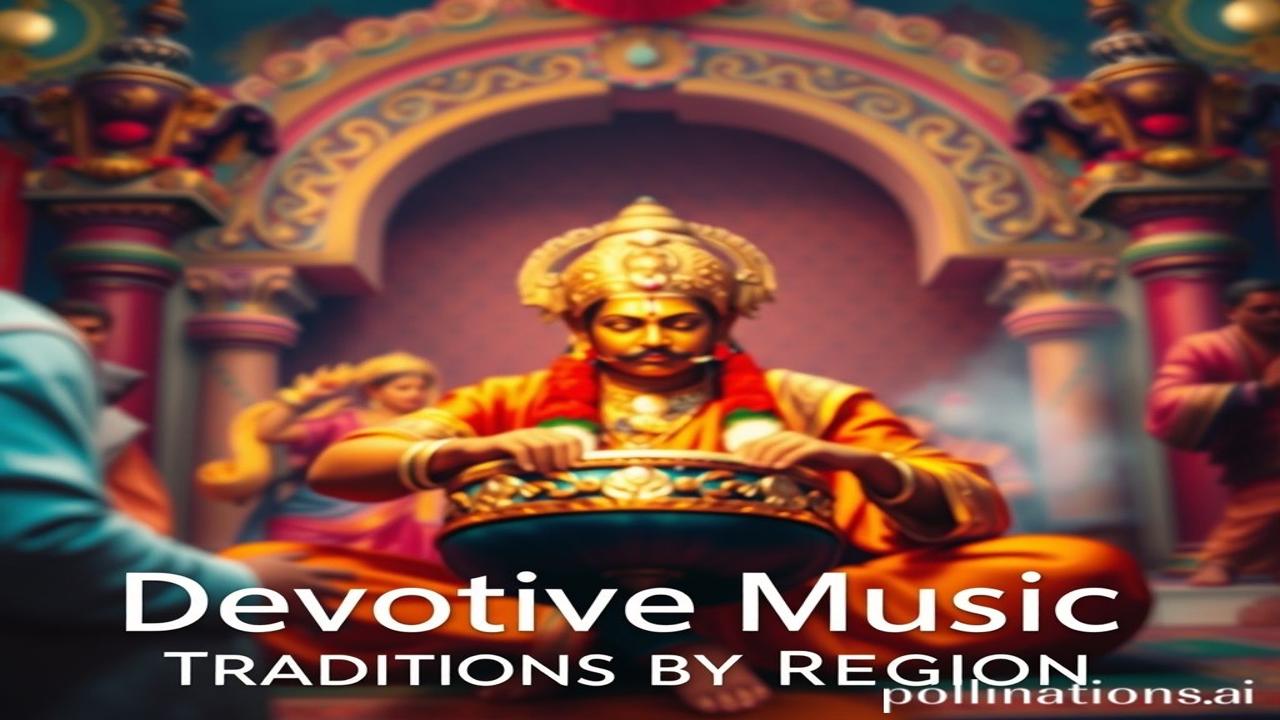Bhajan Se Bollywood Tak: A Journey Through India’s Devotional Music Traditions
Kabhi socha hai, jab shaam hoti hai aur mandir ki ghantiyaan bajti hain, to kitni sadiyon ki aawaaz us mein chhupi hoti hai? Kitni duayein, kitne armaan, kitne aansu us dhun mein ghule hote hain? India ki devotional music traditions, sirf sangeet nahi hai; yeh hamari history, culture aur aatma ki awaaz hai. Chaliye, ek safar par chalte hain, explore karte hain India ke different regions ki devotional melodies ko.
Kya Hai Yeh Devotional Music, Aur Kyon Hai Itna Important?
Devotional music, as the name suggests, is music dedicated to deities and spiritual concepts. Yeh koi nayi cheez nahi hai; iska itihas hazaron saal purana hai. From the ancient chants of the Vedas to the soulful qawwalis of Sufi saints, devotional music has always been an integral part of Indian culture.
Kyon itna important hai? Simple: yeh hamaari aatma ko shanti deta hai. It connects us to something bigger than ourselves. Yeh bhakti ka ek tareeka hai, khud ko express karne ka ek maadhyam hai. And it’s not just about religion; it’s about community, heritage, and shared experiences.
Ek Jhalak: Different Regions, Different Ragas
India ek vast country hai, aur har region ki apni unique devotional music tradition hai. Let’s take a quick tour:
-
North India: Bhajans aur Kirtans: Yeh Hanuman Chalisa ho, ya phir Krishna bhajan, North India ke bhajans mein ek alag hi devotion hai. Often accompanied by instruments like the harmonium, tabla, and dholak, these renditions are filled with energy and emotion.
-
South India: Carnatic Music aur Thyagaraja Kritis: Carnatic music, with its intricate ragas and talas, is a cornerstone of South Indian devotional music. The compositions of saints like Thyagaraja are considered divine. Instruments like the veena, mridangam, and violin are essential.
-
West India: Marathi Abhangs aur Gujarati Bhajans: Maharashtra mein, Sant Tukaram aur Sant Dnyaneshwar ke abhangs har ghar mein sunai dete hain. Gujarat mein, Narsinh Mehta ke bhajans, especially “Vaishnav Jan To”, are iconic.
-
East India: Baul Sangeet aur Bengali Devotional Songs: Bengal’s Baul sangeet is a unique blend of Sufism and Hinduism, characterized by its wandering mendicants and their soulful singing. Rabindra Sangeet also has a strong devotional element.
Zameeni Sach: Logon Ki Zindagi Mein Devotional Music
Imagine a village in Rajasthan. Subah subah, a woman is grinding wheat while singing a Meera Bai bhajan. The air is filled with the aroma of spices and the gentle melody of her voice.
Or, picture a temple in Tamil Nadu. The priest, with his forehead smeared with sandalwood paste, chants Sanskrit shlokas with perfect diction. The rhythmic beats of the mridangam fill the air, creating an atmosphere of divine tranquility.
Ma Rukmini ne aaj naye kapde pehne, kyunki mandir mein utsav tha. Dhol ki aawaaz se pura gaon jaag gaya. Every year the whole town celebrated with a lot of joy.
These everyday moments are woven together by the threads of devotional music. It’s not just something we listen to in temples or during festivals; it’s a part of our daily lives, our joys, and our sorrows.
Dharohar Aur Pehchan: Aaj Ki Duniya Mein Devotional Music
Even today, devotional music plays a vital role in preserving and promoting Indian culture. From classical concerts to Bollywood songs, devotional themes continue to resonate with audiences across the globe.
Think about the Aarti at the Ganga in Varanasi, or the Sufi shrines of Ajmer Sharif. These are places where devotional music transcends religious boundaries and unites people in a shared experience of faith and devotion.
And let’s not forget the younger generation. Many young musicians are now reinterpreting traditional devotional music, blending it with modern sounds and making it accessible to a wider audience. This ensures that our rich musical heritage continues to thrive.
Majedar Tathya Ya Bhram-Bhanjak
Myth: Devotional music is only for older people.
Reality: Devotional music appeals to people of all ages. Look at the popularity of kirtans and bhajan groups among young adults!
Fun Fact: The ancient Vedas, considered to be some of the oldest texts in the world, contain hymns and chants that are the foundation of Indian devotional music.
Drishya Aur Bhavnayein
Imagine the smell of incense wafting through the air, the feel of cool marble under your feet, and the sound of temple bells echoing in your ears. These sensory experiences are an integral part of the devotional music experience.
Think about the vibrant colors of a Kirtan procession, the hypnotic rhythm of a qawwali, and the serene atmosphere of a Buddhist monastery. Devotional music is not just about sound; it’s about creating a complete sensory experience that transports you to another realm.
Antim Vichar Ya Uddharan
Devotional music is more than just entertainment; it’s a pathway to inner peace, a celebration of our cultural heritage, and a reminder of our shared humanity.
As the ancient shloka says: “Vasudhaiva Kutumbakam” – The world is one family. And through the universal language of music, we can all connect with each other, regardless of our backgrounds or beliefs.
“Sangeet aatma ka bhojan hai, aur bhakti uski mithas.”
